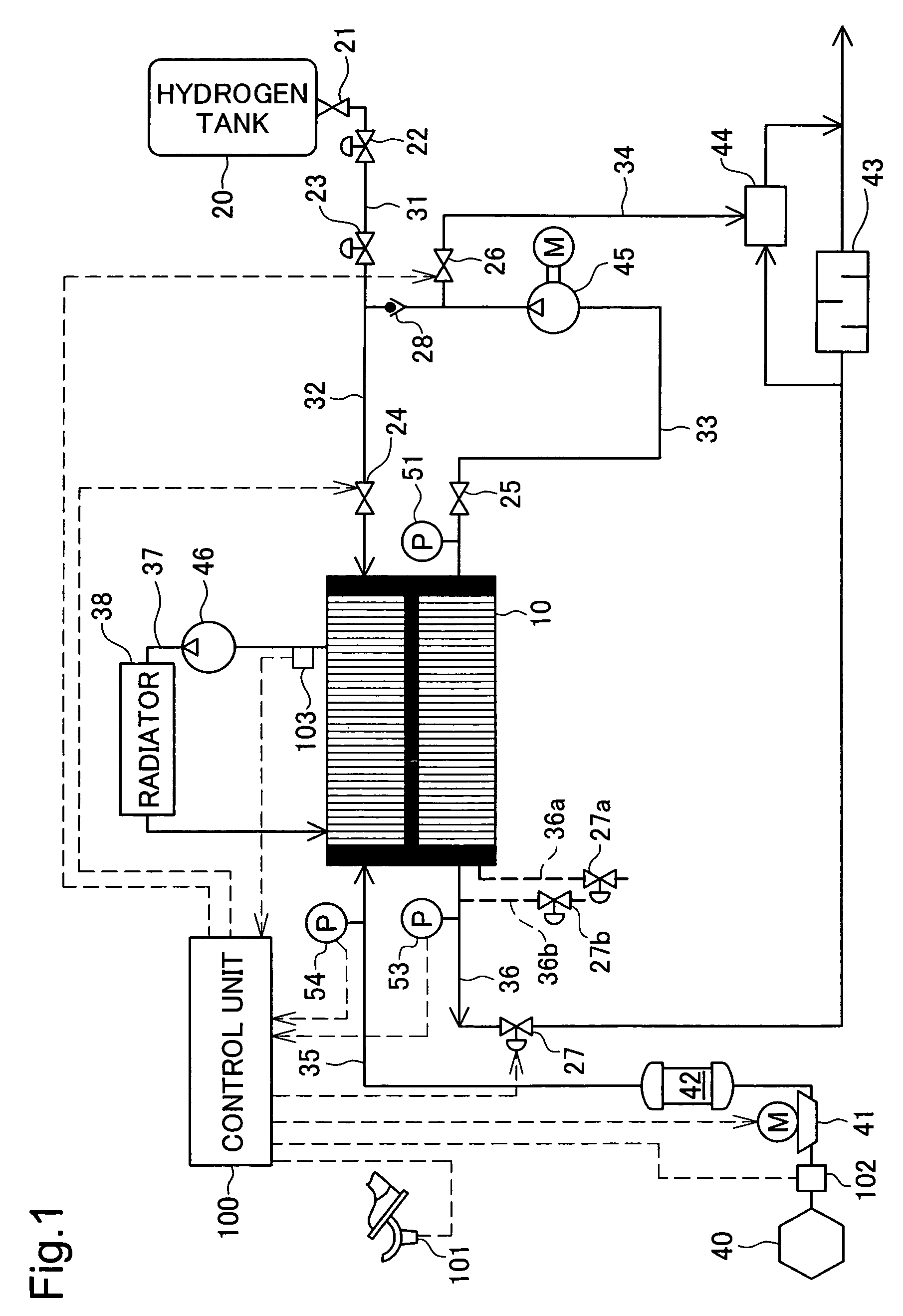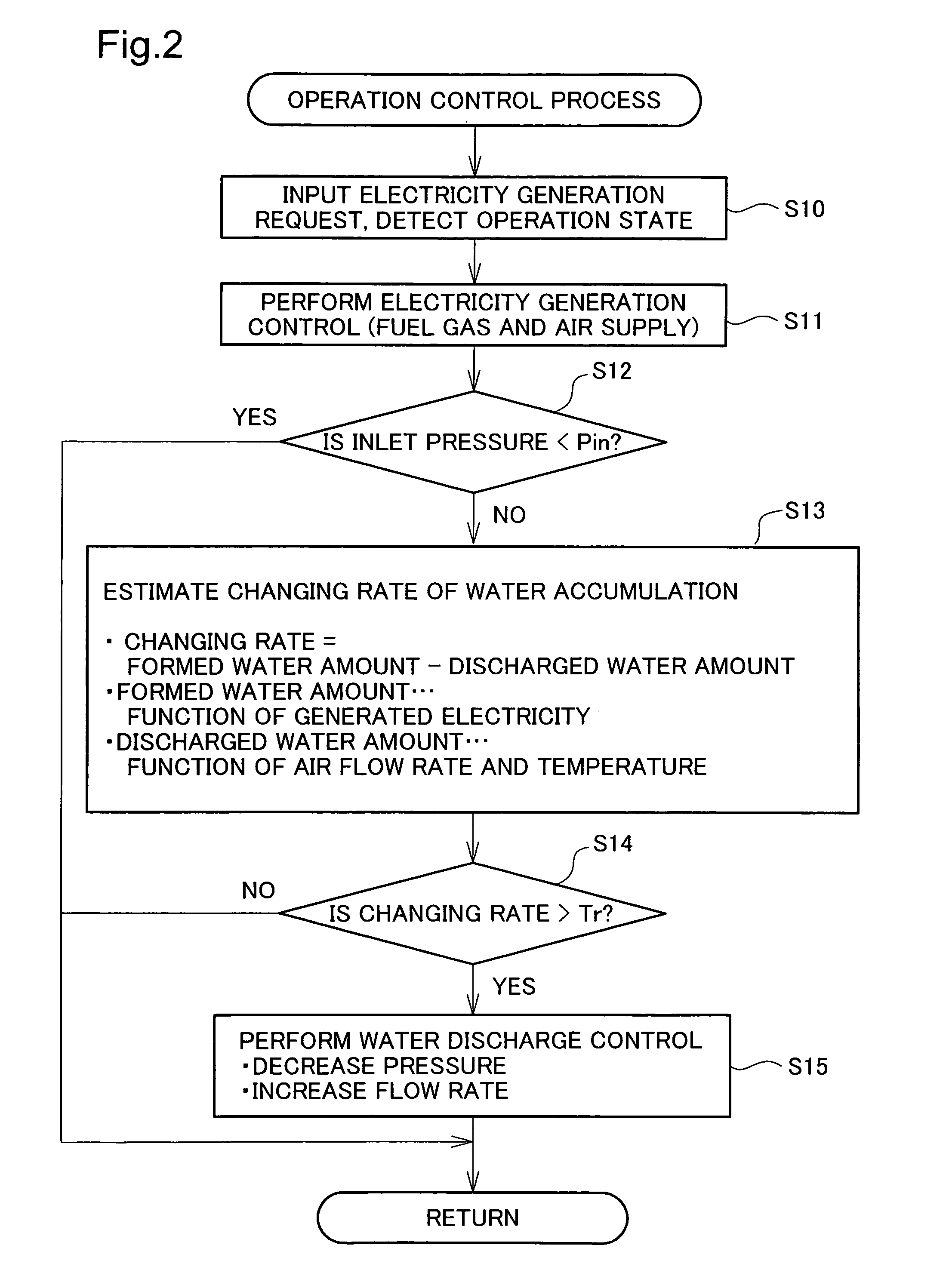Operation control of a fuel cell system
a fuel cell and control technology, applied in the direction of fuel cells, electrochemical generators, electrical equipment, etc., can solve the problems of clogging of oxidizing gas pipelines, inability to discharge formed water, interference of oxidizing gas supply, etc., to achieve water discharge efficiently and simplify the device arrangement
- Summary
- Abstract
- Description
- Claims
- Application Information
AI Technical Summary
Benefits of technology
Problems solved by technology
Method used
Image
Examples
Embodiment Construction
The embodiments of the present invention are described in the following order.A. Device Arrangement:B. Operation Control Process:C. Water Discharge Control:D. Variation Example:
A. Device Arrangement:
FIG. 1 is an explanatory drawing showing the overall arrangement of the fuel cell system as an embodiment. The fuel cell system in this embodiment is incorporated in an electric vehicle driven by a motor as a power source. When the driver depresses the accelerator, power generation is performed according to the depression amount detected by the accelerator opening sensor 101, and it is possible to run the vehicle using this power. The fuel cell system does not have to be placed within the vehicle as this embodiment. The present invention may be applicable for the fuel cell systems with various arrangements such as the stationary type fuel cell system.
The fuel cell stack 10 is a stack of cells for generating electricity by an electrochemical reaction of hydrogen and oxygen. Each cell is c...
PUM
| Property | Measurement | Unit |
|---|---|---|
| outlet gas pressure | aaaaa | aaaaa |
| pressure | aaaaa | aaaaa |
| flow rate | aaaaa | aaaaa |
Abstract
Description
Claims
Application Information
 Login to View More
Login to View More - R&D
- Intellectual Property
- Life Sciences
- Materials
- Tech Scout
- Unparalleled Data Quality
- Higher Quality Content
- 60% Fewer Hallucinations
Browse by: Latest US Patents, China's latest patents, Technical Efficacy Thesaurus, Application Domain, Technology Topic, Popular Technical Reports.
© 2025 PatSnap. All rights reserved.Legal|Privacy policy|Modern Slavery Act Transparency Statement|Sitemap|About US| Contact US: help@patsnap.com



